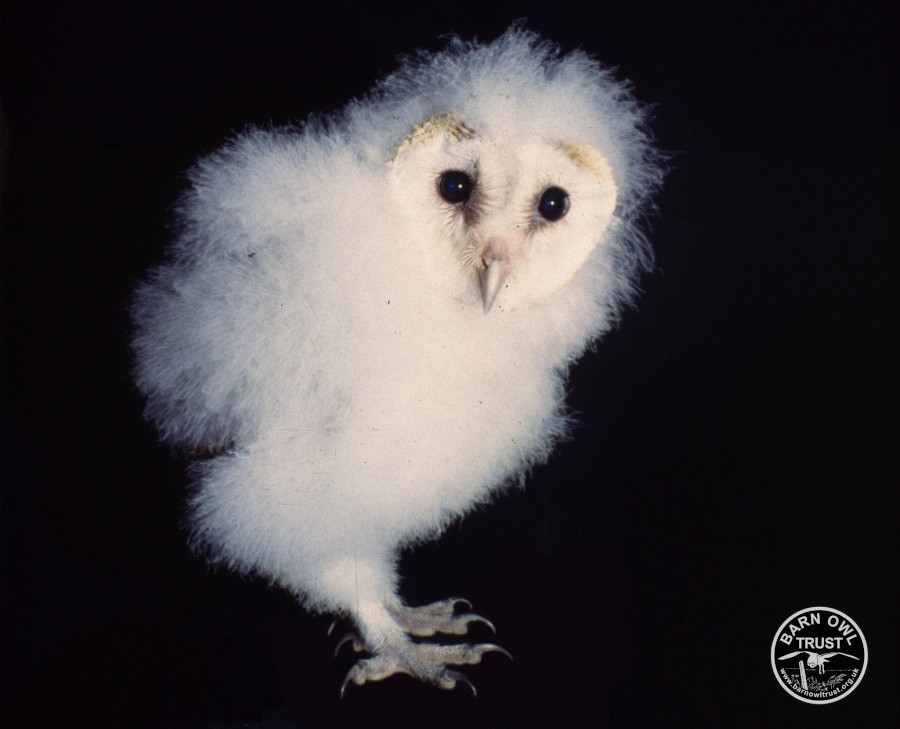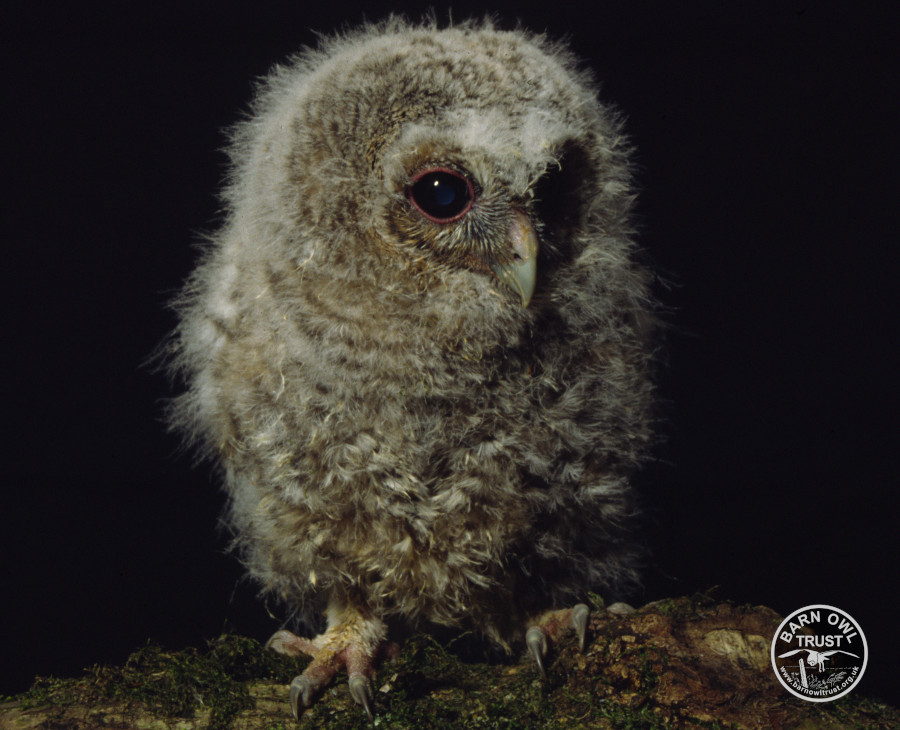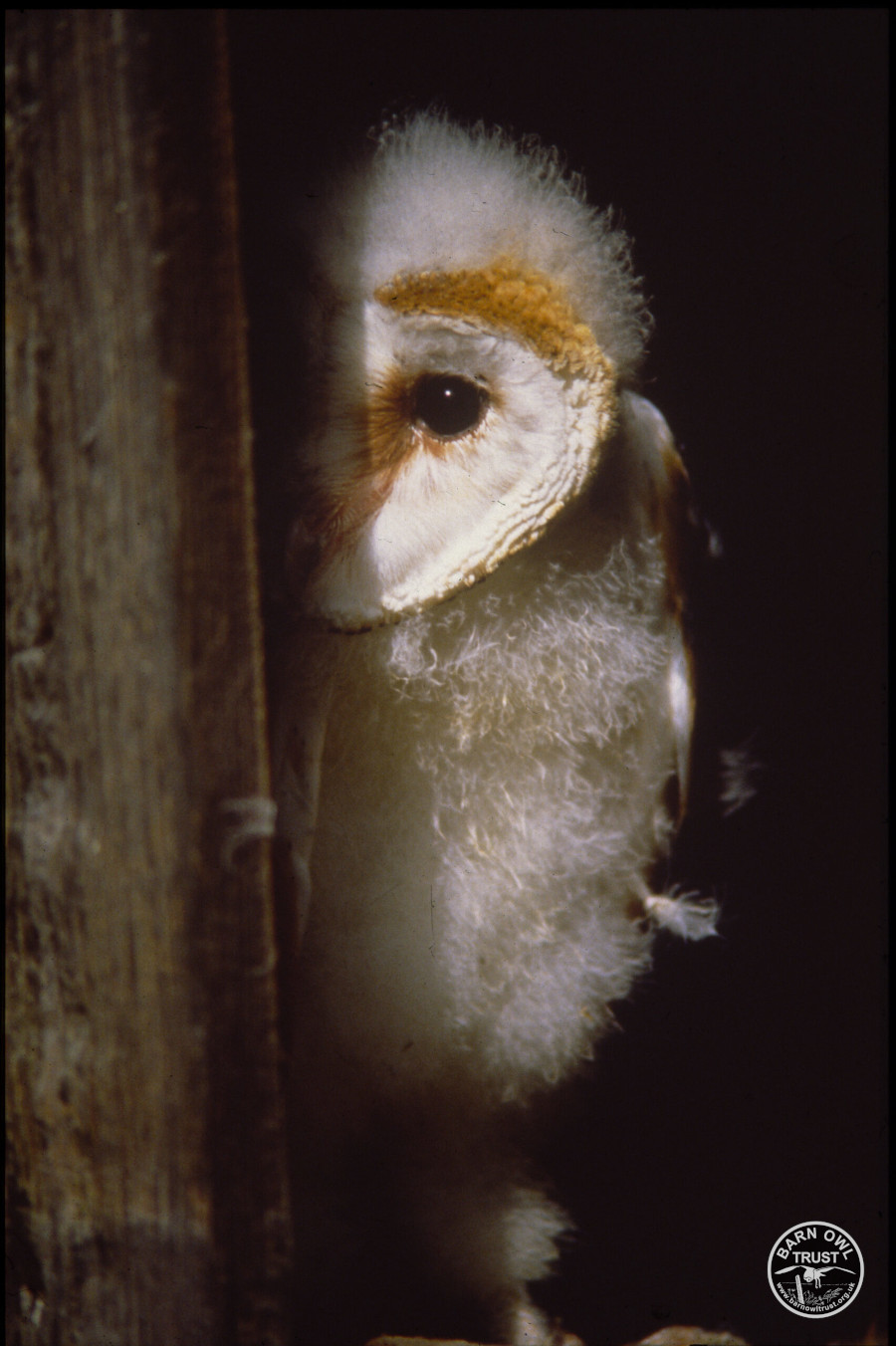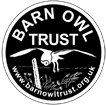Owlet identification and ageing
Nestlings: Tawny Owl on the left, Barn Owl on the right
Why is it important to identify and age an owlet accurately?
When you find an owlet, it’s important to be able to identify and age it accurately, because what species it is and how old it is will dictate the correct course of action. For example, healthy Tawny Owlets can be left alone whilst healthy Barn Owlets must be replaced in the nest. Certain individuals may also need rehabilitation depending on the circumstances.
Nestlings: Tawny Owl on the left, Barn Owl on the right
How do you identify an owlet?
Barn Owl
Down
White down (very soft and fluffy)
Eye-lids
Dark eyes, flesh-coloured eye-lids
Toes
Unfeathered toes
Often found…
in or near buildings (but will use hollow trees or nestboxes on trees or poles)

Tawny Owl
Down
grey/dirty looking down (white when very small – under 10cm)
Eye-lids
Dark eyes, livid pink eye-lids
Toes
Well-feathered toes
Often found…
in woodland or close to trees

Little Owl
Down
brown / dirty-looking down
Eye-lids
Pale eyes, flesh-coloured eye-lids
Toes
Slightly feathered toes
Often found…
often found in or near buildings, or under mature trees

How do you age an owlet?
People who are licensed to handle wild owls can tell how old they are by taking measurements. Here’s an easy guide for everyone else:
Nestlings
- Don’t look old enough to leave the nest
- No, few or not fully-grown ‘proper’ feathers
- Downy or ‘fluffy’ appearance
Fledglings
- Do look just about old enough to leave the nest
- Mostly-feathered appearance
- Still some wispy down on feathers, typically on the top of the head/between the legs
Juveniles
- Identical to adults in appearance
- Fully-feathered
- No down
With certain measurements, an owlet’s age can be accurately determined (WL = Wing Length)

What should I do if it’s in trouble?
If the owlet that you have found shows signs of injury or starvation, or you are advising someone else who has found an owl, please refer to the following pages:
- Picking up a live owl
- How to check for injuries
- Should I pass it on?
- Finding a local rehabilitator
- Short term care of a wild owl
- What to do if you find a young Barn Owl
- What to do if you find a young Tawny Owl
Take a look at our galleries of Barn Owl nestlings and fledglings and our photo guide to owlet growth and development.
Chapter 9 of the Barn Owl Conservation Handbook provides a lot more information on owl rehabilitation.



